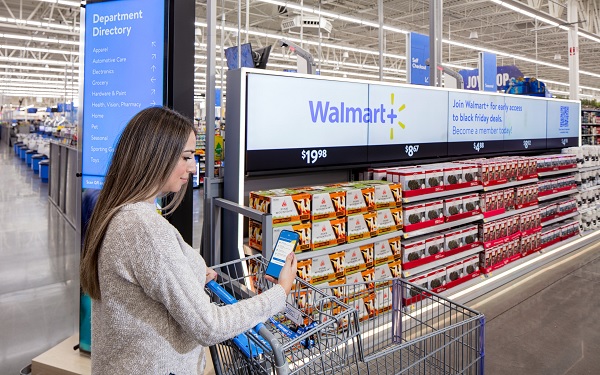If you are a supplier for Walmart, you might have heard of Retail Link, a reporting software developed by Walmart that gives you access to point-of-sale data, documentation, reports, store information, Walmart communications, and special applications that you can use to manage your business. Walmart Retail Link is a powerful tool that can help you optimize your inventory, sales, and profitability as a Walmart supplier. But how can you make the most of it? Here are some tips and best practices to guide you.
What is Retail Link and How Does It Work
Retail Link is a system that is owned by Walmart that gives suppliers the ability to manage their own items. It allows you to access data and insights on how your products are performing at Walmart stores and online. You can use Retail Link to:
- Monitor your sales, inventory, and replenishment metrics
- Analyze your performance by store, region, category, or item
- Identify opportunities and issues based on trends and patterns
- Create and share reports and dashboards with your team and Walmart buyers
- Access training and support resources from Walmart
To use Retail Link, you need to have a user ID and password that you can obtain from Walmart. You also need to have a compatible browser such as Chrome or Internet Explorer.
How to Use Retail Link Effectively as a Supplier
Retail Link can provide you with a wealth of information that can help you grow your business with Walmart. However, it can also be overwhelming and confusing if you don’t know how to use it properly. Here are some tips and best practices to help you use Walmart Retail Link effectively as a supplier:
– Learn the basics of Retail Link: Before you dive into the data and reports, make sure you understand the basics of Retail Link such as how to navigate the interface, how to access different applications, how to customize your settings, and how to get help if you need it.
– Know your key metrics and goals: Depending on your product category and business objectives, you should focus on different metrics and goals when using Walmart Retail Link.
– Use the right tools and reports: Retail Link offers various tools and reports that can help you analyze your data and gain insights. Some of the most popular ones are:
- Decision Support: This is the main application that allows you to create and run queries on various data sources such as sales, inventory, replenishment, store information, etc.
- Supplier Performance Scorecard: This is a dashboard that shows your performance on key metrics.
- Store Assortment Online (SAO): This is an application that allows you to view and manage your product assortment at each Walmart store.
- Item 360: This is an application that allows you to view and update your item information.
- Monitor your data regularly: To stay on top of your performance and identify opportunities and issues quickly, you should monitor your data regularly using Retail Link.
- Communicate with your Walmart buyer: One of the benefits of using Retail Link is that it allows you to communicate with your Walmart buyer more effectively.
How to Compare Walmart Retail Link with Amazon Vendor Central
If you are a supplier for both Walmart and Amazon, you might be wondering how Walmart Retail Link compares with Amazon Vendor Central, the platform that allows you to sell directly to Amazon as a supplier. Here are some of the main differences and similarities between Retail Link and Amazon Vendor Central:
– Data access and transparency: Retail Link gives you more access and transparency to your data than Amazon Vendor Central. You can access more data sources and metrics on Retail Link such as store-level sales and inventory, category performance, customer reviews, etc.
– User interface and usability: Amazon Vendor Central has a more user-friendly and intuitive interface than Retail Link. You can navigate and find the information you need more easily on Amazon Vendor Central than on Retail Link.
– Pricing and terms: Amazon Vendor Central has more control over your pricing and terms than Retail Link. Amazon can set or change your prices, discounts, fees, etc. without your consent or input. Retail Link gives you more flexibility and negotiation power over your pricing and terms with Walmart.
– Support and training: Retail Link offers more support and training resources than Amazon Vendor Central. You can access more online or in-person training courses, tutorials, guides, webinars, etc. on Retail Link than on Amazon Vendor Central.
Conclusion
Retail Link is a valuable tool that can help you maximize your success as a Walmart supplier. By using it effectively, you can gain insights into your performance, optimize your inventory, sales, and profitability, and communicate and collaborate with your Walmart buyer. However, Retail Link is not the only platform that you need to master as a supplier. If you also sell to Amazon or other retailers, you should compare and contrast their platforms with Walmart Retail Link and learn how to use them efficiently and strategically.
